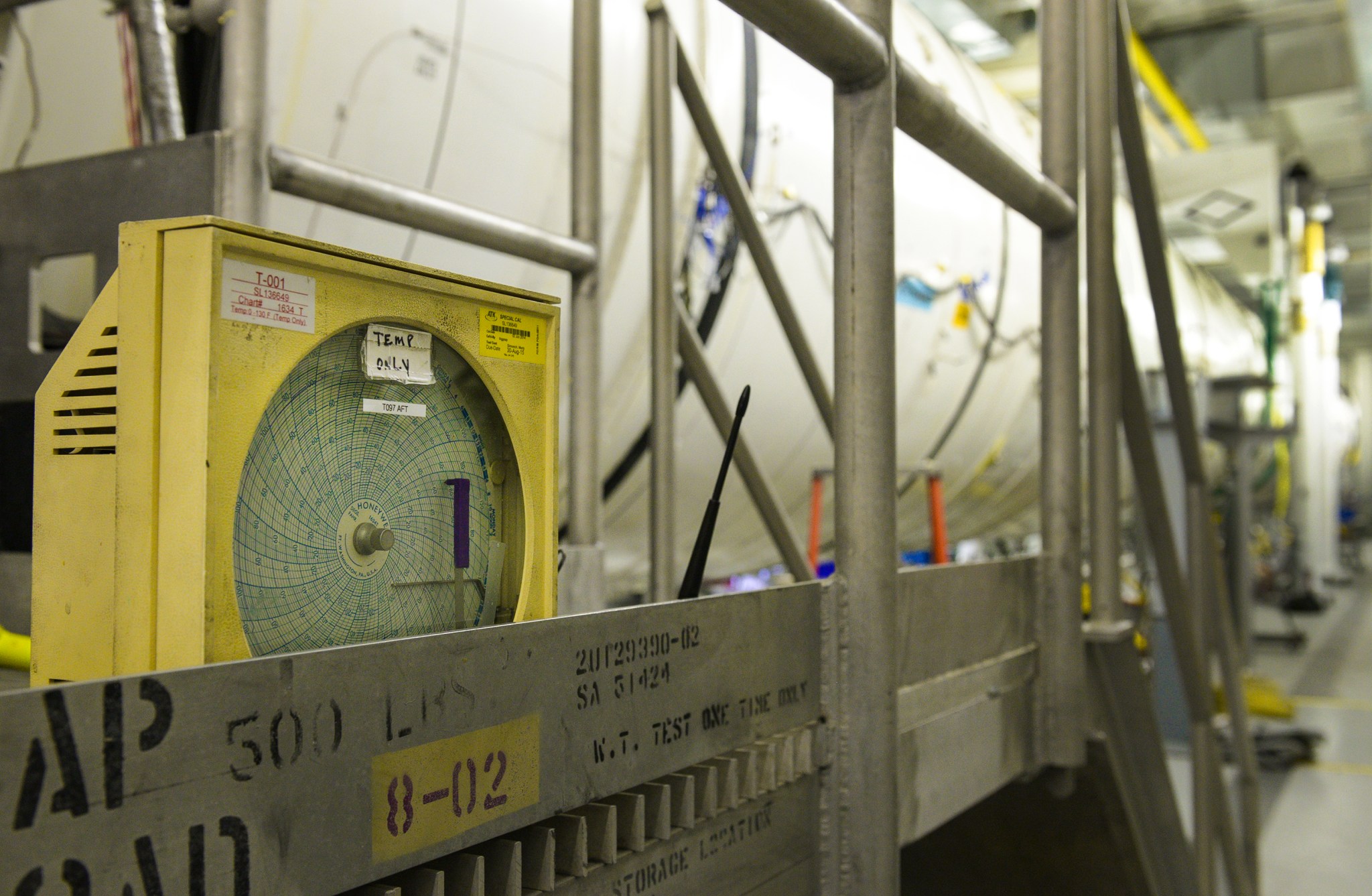Steam me up, Scotty. Well before this week’s major ground test of the booster for NASA’s Space Launch System (SLS) rocket, engineers have been warming things up so the booster will be not too hot, not too cold — but just right for the two-minute, full-duration firing.
At Orbital ATK’s test facility in Promontory, Utah, the booster is being heated to 90 degrees Fahrenheit ahead of the March 11 test. The hot fire is a significant milestone for the program and will support qualification of the booster design for performance at the highest end of the booster’s accepted propellant temperature range. Two boosters, along with four RS-25 engines, will propel SLS and the Orion spacecraft atop it, to orbit as they begin the journey to deep space destinations like an asteroid and Mars.

Data and analysis from past human-rated space programs, like the Space Shuttle Program, which used a smaller version of the booster, have set the condition parameters for boosters between 40 and 90 degrees.
“The space shuttle propellant mean bulk temperature ranged from approximately 55 to 83 degrees on the launchpad, so the 90-degree mark does a good job representing what we expect to see for SLS,” said Mat Bevill, deputy chief engineer in the SLS Boosters Office at NASA’s Marshall Space Flight Center in Huntsville, Alabama, where the program is managed for the agency.
“The booster is so large at 177 feet long, and other than the metal case around the propellant, it’s basically made up of mostly rubber-like materials,” added Bevill. “With that much mass, it takes about a month to affect the temperature and get it uniform all the way through.”
The booster’s propellant burn rate is temperature-dependent, so the hotter it is, the faster it burns. That propellant burn rate affects the performance of the booster both at launch and in flight.
To get the temperature to 90 degrees, the thermostat is turned up inside the test stand where the booster is housed. Sensors inside the booster measure the temperature, and analytical models also predict the time it takes for the booster to be “done” at 90 degrees.
The day of the hot fire, the test stand cover, which is on rails, will be rolled out of the way.
“Outside temperatures are something we have to watch, but just like it takes a long time to heat the booster, it takes a long time to get the temperature back down,” Bevill said. “That’s why we target the highest temperature condition for testing. This isn’t a new concept – we’ve always conditioned to a certain temperature. We basically know ahead of time how the booster will respond, but we still watch and make sure it performs the way we think it will.”
Some 102 design objectives will be measured through more than 531 instrumentation channels on the booster. Along with temperature, the test will demonstrate that the booster meets applicable ballistic performance requirements, such as thrust and pressure. Other objectives include data gathering on vital motor upgrades, such as the new internal motor insulation and liner and the redesigned nozzle, which increases the robustness of the design.
A second booster qualification test planned for early next year will be a cold test, where the booster will be conditioned to 40 degrees — the low-end temperature parameter for the booster.
“These two qualification tests are major steps in getting the booster certified for the first two flights of SLS and another step closer on the journey to Mars,” said SLS Boosters Office Manager Alex Priskos.
The added booster segment contains more solid propellant that allows SLS to lift more weight and reach a higher altitude before the boosters separate from the core stage. The core stage, towering more than 200 feet tall with a diameter of 27.6 feet, will store cryogenic liquid hydrogen and liquid oxygen that will feed the vehicle’s RS-25 engines.
When completed, two five-segment boosters and four RS-25 engines will be used for the first two, 70-metric-ton flights of the SLS. The first SLS flight test will carry an uncrewed Orion spacecraft beyond low-Earth orbit to test the performance of the integrated system. As the SLS evolves, it will provide an unprecedented lift capability of 130 metric tons (143 tons) to enable missions even farther into our solar system, like to an asteroid and ultimately to Mars.
For more information on boosters and the March 11 test, visit:
https://www.nasa.gov/sls/space-launch-system-boosters-101.html
For more information on SLS, visit:


























